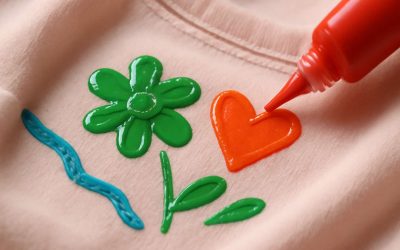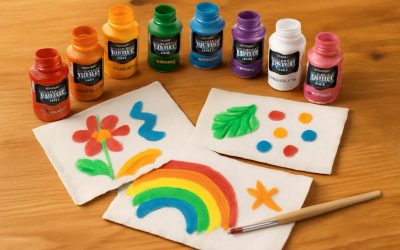If you’re looking to create a piece of clothing that is truly one-of-a-kind, fabric paint may be the perfect solution. With the help of this durable paint, you can add intricate patterns to fabrics like cotton, denim, and more. In addition to being durable, this type of paint is also incredibly easy to clean up, allowing you to get back to your crafting quickly. But if you’re new to the world of fabric painting, you may be wondering whether or not it is the right fit for your project.
While fabric dyes are the first thing that comes to mind when many people think of changing a garment’s coloration in a long-lasting way, fabric paints offer a much more versatile option. These paints, which come in a wide array of colors and shades, can be used to add color to fabrics without altering their texture. They’re typically easier to work with than dyes, and they’re ideal for adding details to a garment that you don’t want to completely change in color or style.
Unlike acrylic paint, which dries stiff on fabric, fabric paint dries soft and feels almost like it’s part of the garment. This makes it a good choice for garments that will come into contact with the skin, like t-shirts or tote bags. This type of paint also allows for a great deal of flexibility, as you can move your brush strokes around the garment to suit its shape and size. It can be used on both light and dark fabrics, but it’s important to pre-wash your fabric to prevent color loss and shrinkage.
Before starting your project, make sure to put a piece of cardboard or thick paper underneath your work surface to prevent bleed-through. It’s also a good idea to secure your fabric to the cardboard using fabric pins to minimize the risk of accidentally smudging the paint as you work. Once your project is complete, allow it to dry in a well-ventilated area for the amount of time recommended on the product’s label.
You can use a variety of techniques with fabric paint, including free-painting, stenciling, blocking and stamping, and wet painting. It’s a good idea to practice your technique on fabric scraps and pieces before you begin working on your garment. This will give you a feel for the kind of control that you have over your brushstrokes, and it’ll help you determine what kinds of shading and colors are best for your fabric project.
If you’re planning on using fabric paint on a darker material, we recommend painting the area that you plan to paint with white beforehand. This will catch the colors and make them pop on a dark fabric. You should also be sure to wash any new or previously worn fabric that you plan on using before applying any paints or dyes. This will help the fabric return to its original size and remove any existing starches that may cause it to lose its shape when it’s painted.



0 Comments